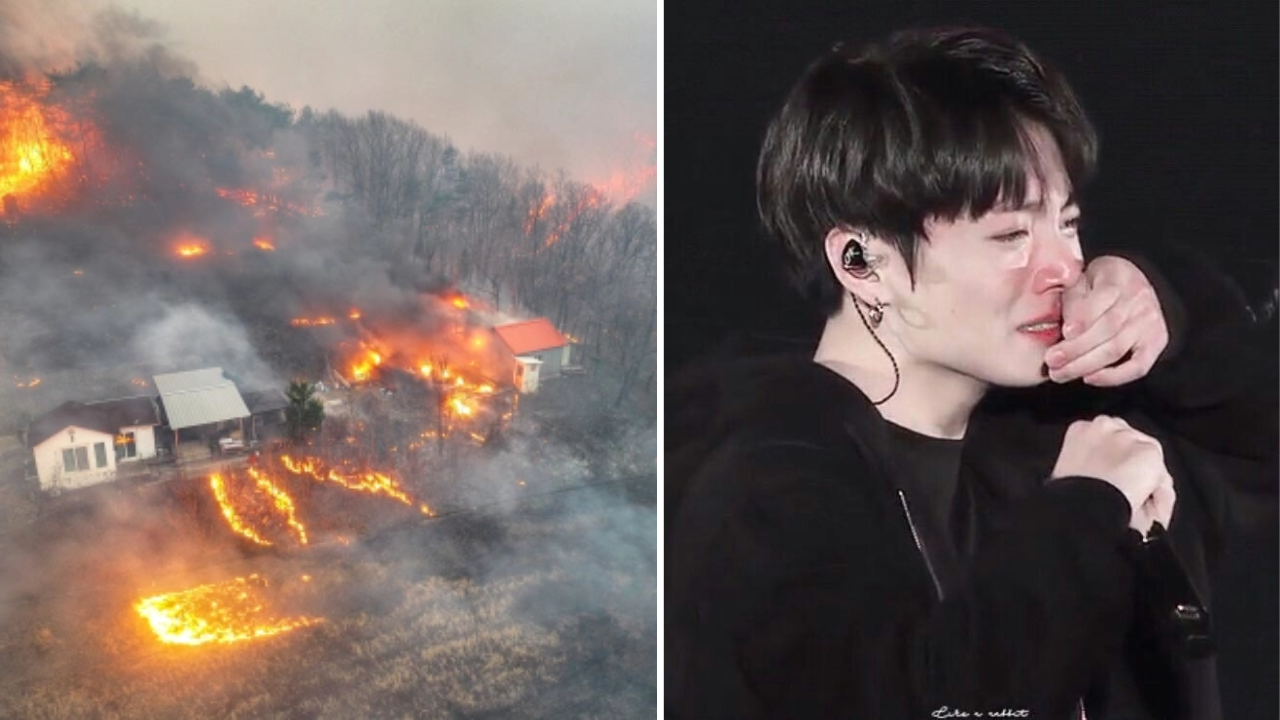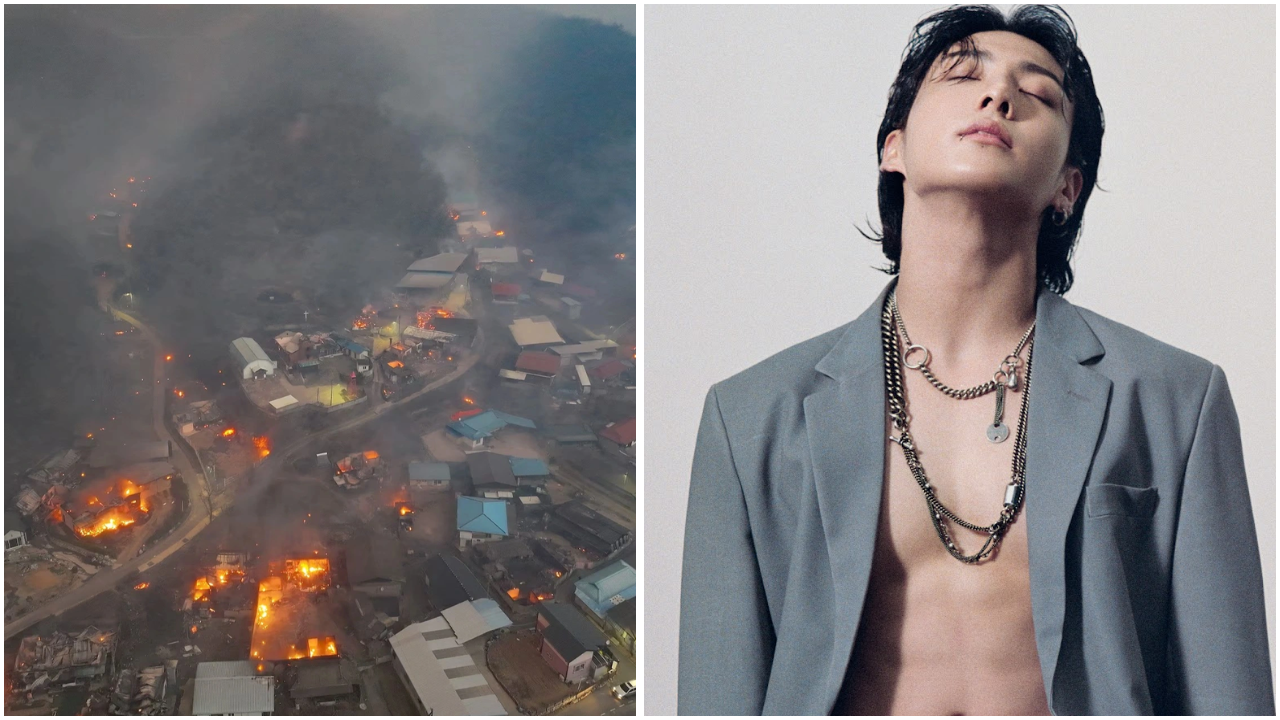In late March 2025, South Korea faced an unprecedented environmental catastrophe as massive wildfires ravaged its southeastern regions. The fires, which began on March 21, were fueled by dry conditions and strong winds, leading to rapid spread and extensive damage. By March 27, the death toll had risen to 26, with thousands displaced and significant cultural heritage sites threatened.
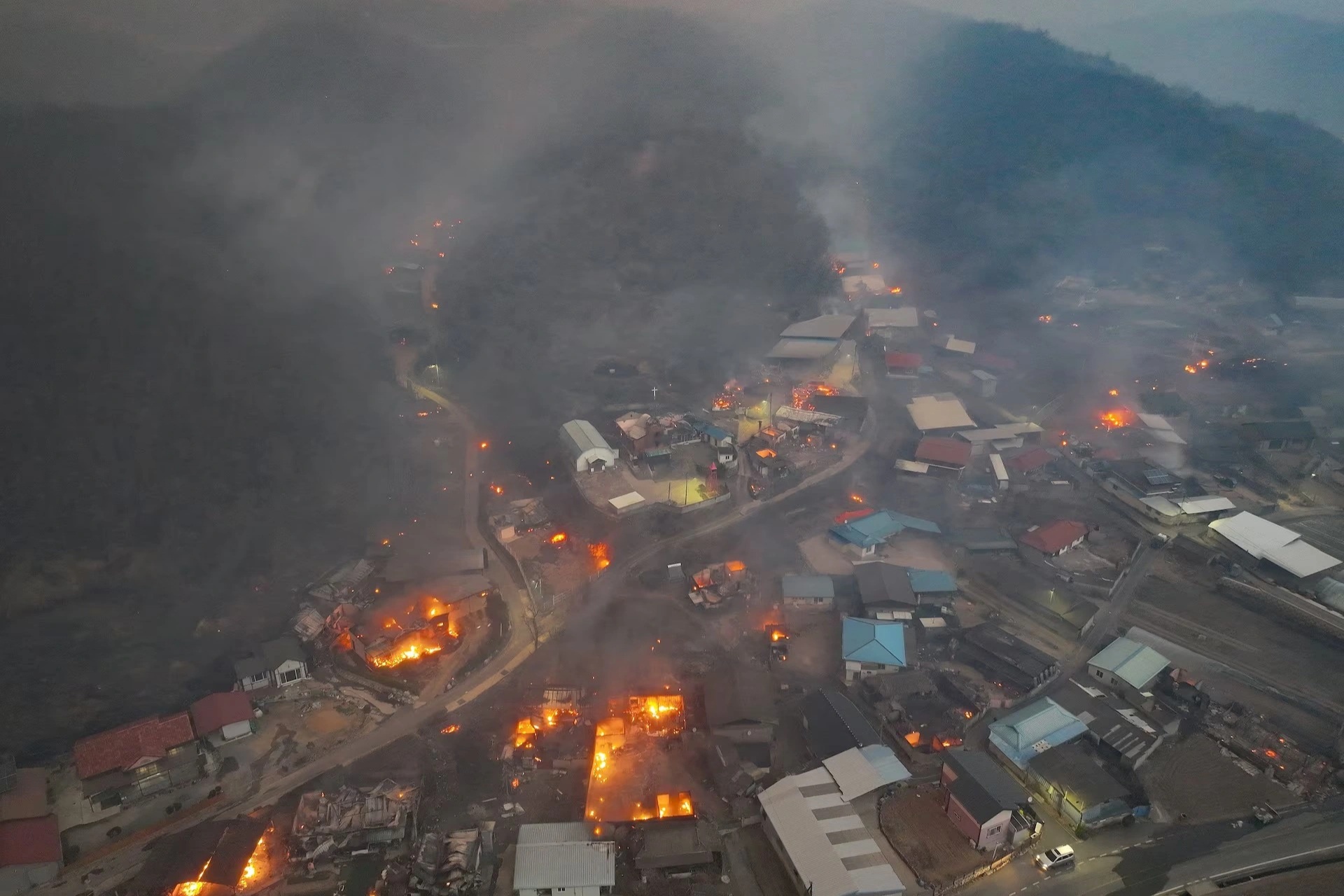
Extent of the Disaster
The wildfires primarily affected areas such as Sancheong County, Uiseong, Andong, and Ulju County. In Uiseong and Andong alone, over 45,000 hectares were consumed by flames, marking these as some of the largest fires on record in South Korea. The rapid spread of the fires necessitated the evacuation of more than 27,000 residents, with entire villages being emptied as flames approached.
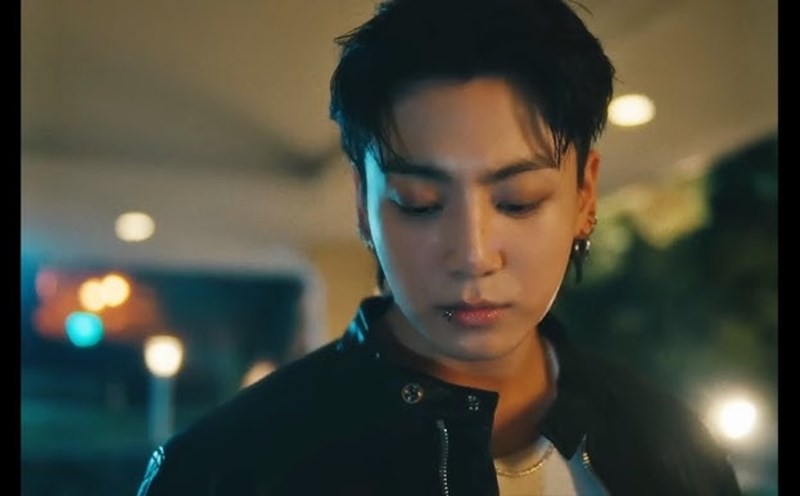
Cultural and Environmental Impact
Beyond the immediate human toll, the wildfires inflicted severe damage on South Korea’s cultural heritage. The 1,300-year-old Gounsa Buddhist temple in Uiseong was among the historic sites destroyed. Additionally, UNESCO World Heritage Sites like the Hahoe Folk Village were under threat, prompting emergency measures to protect these landmarks. The environmental impact was equally devastating, with vast tracts of forestland reduced to ashes, disrupting local ecosystems and wildlife habitats.

Government and Community Response
In response to the crisis, the South Korean government declared the affected regions as disaster zones, enabling the allocation of special disaster and safety grants totaling 2.6 billion won (approximately $177.4 million USD) to support recovery efforts. Acting President Han Duck-soo emphasized the unprecedented nature of the disaster and called for all available resources to be mobilized to combat the fires and assist those affected.
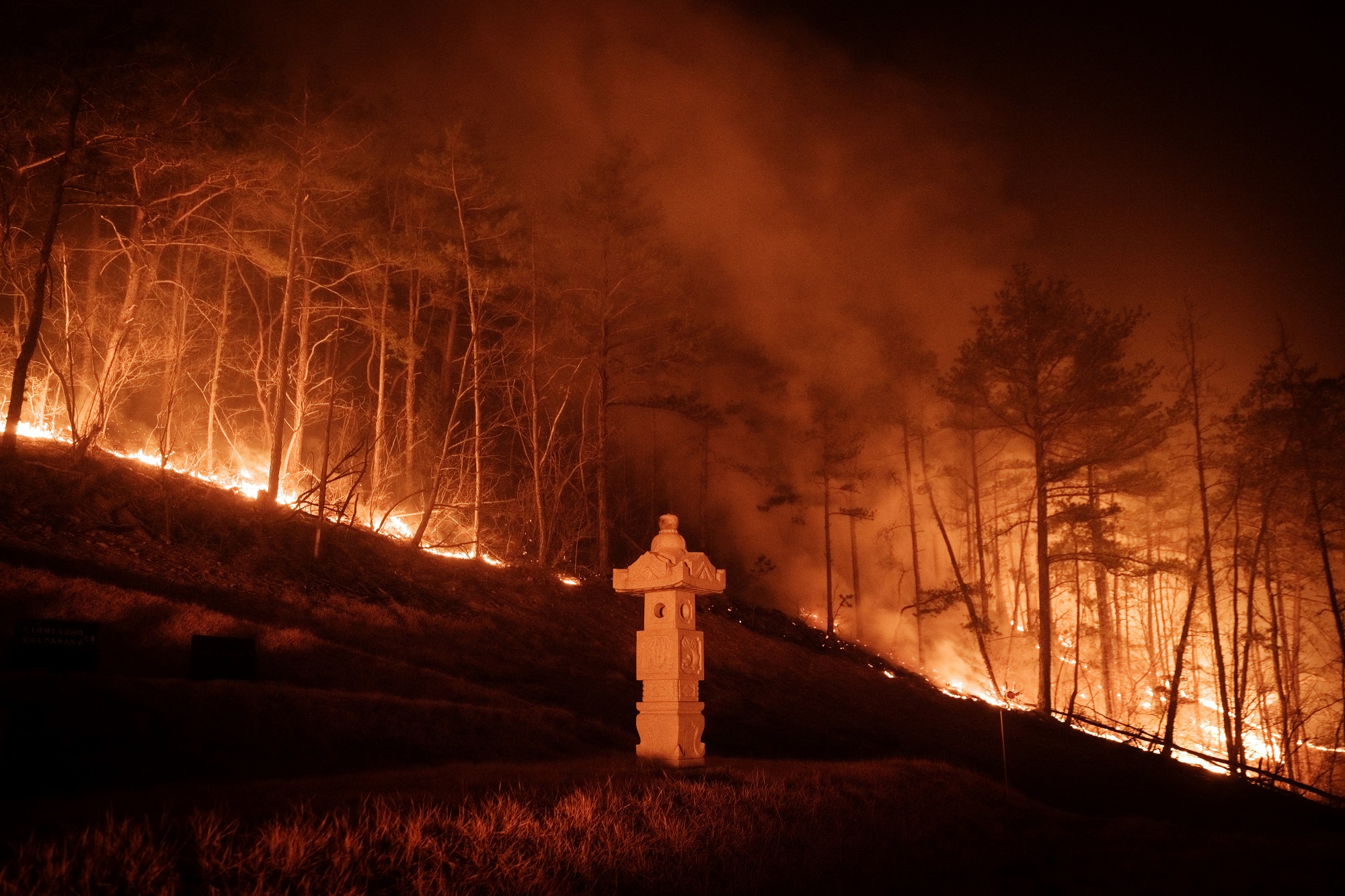
Jungkook’s Generous Contribution
Amidst the national emergency, Jeon Jungkook, a member of the globally renowned K-pop group BTS, made a significant contribution to the relief efforts. Jungkook donated 2 million dollars to the Hope Bridge National Disaster Relief Association to aid those affected by the wildfires. His donation was part of a broader wave of support from the entertainment industry, with other artists and groups also contributing to relief organizations. Jungkook’s act of generosity was widely praised, highlighting the influential role of public figures in mobilizing support during times of crisis.

Ongoing Challenges and Recovery Efforts
Despite concerted firefighting efforts involving thousands of personnel and hundreds of helicopters, the wildfires continued to pose challenges due to changing wind patterns and dry weather conditions. Authorities remained vigilant against potential new outbreaks and focused on providing aid to displaced residents. The disaster underscored the need for improved wildfire response strategies and equipment, particularly for nighttime operations. It also reignited discussions on the impact of climate change in exacerbating extreme weather events and the importance of enhancing preparedness for such natural disasters.

Conclusion
The March 2025 wildfires in South Korea represent one of the most severe environmental disasters in the country’s recent history. The extensive loss of life, displacement of communities, and destruction of cultural heritage have left an indelible mark on the nation. However, the swift response from the government, the resilience of the affected communities, and the solidarity demonstrated through generous donations from individuals like Jungkook offer a beacon of hope as South Korea embarks on the long road to recovery.
